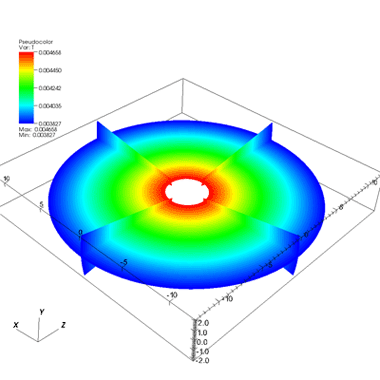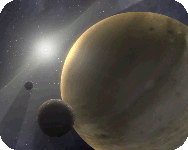Modeling the formation of massive stars
Contact: Rolf Kuiper
Although massive stars exert strong influence on the evolution of the interstellar medium (ISM), the formation of clusters, and the universe in general, many questions regarding their physical formation processes still remain open. The main one is how do massive stars overcome the radiation pressure and actually accrete matter onto the luminous central protostar? The most likely way to solve this problem is to leave spherical symmetry and accrete the matter - similar to the low-mass case - via accretion disks. There exists ample indirect evidence for massive accretion disks (e.g. collimated outflows require magneto-centrifugal acceleration associated with accretion disks). However, observational and theoretical characterization of massive accretion disks is still in its infancy. In this work I study the massive-accretion-disk scenario within 3D-hydrodynamical models (focusing on radiation transfer but potentially also including self-gravity and magnetic fields) to figure out fundamental properties of the massive protostellar system like the morphology and stability of the disk, the dynamical shape of the velocity profile, the preferred way of accretion and its accretion rate as a function of the initial core mass. In the post processing we will also derive observables from our models using detailed continuum radiation transport and line transport tools to compare the models with observations.


